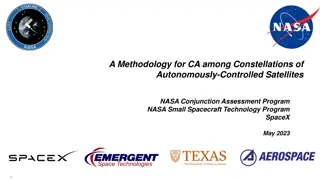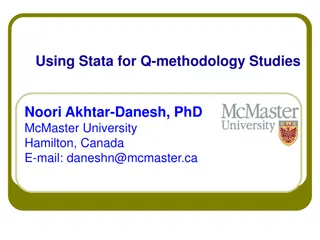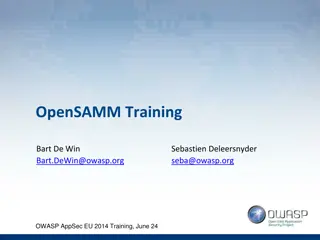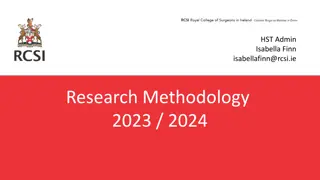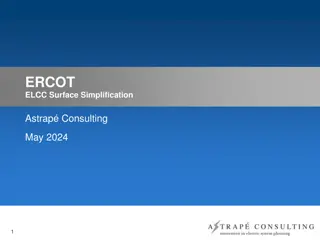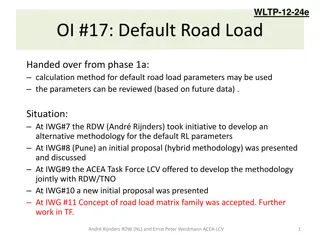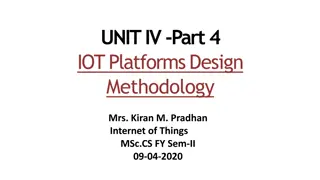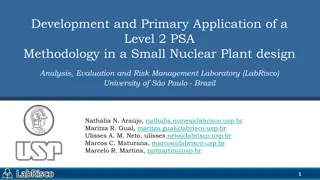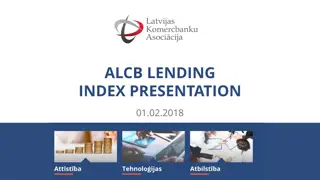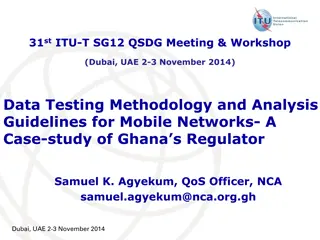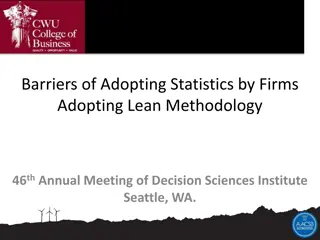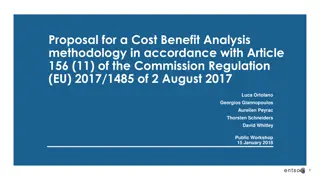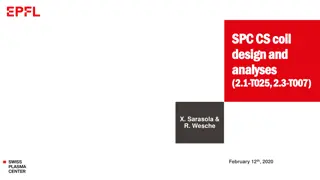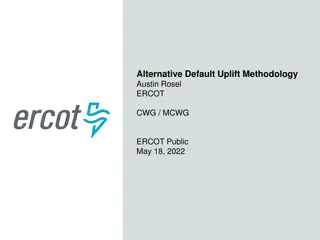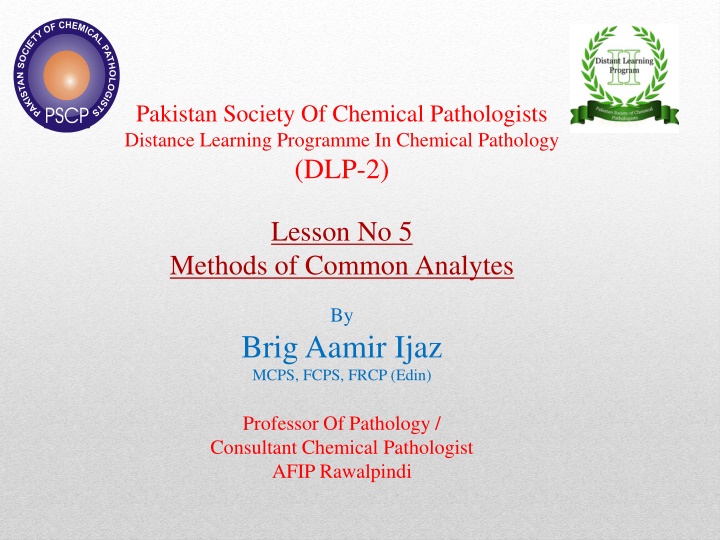
Chemical Pathology Distance Learning Programme Methods of Common Analytes
Join the Pakistan Society of Chemical Pathologists for the Distance Learning Programme in Chemical Pathology (DLP-2) with Brig. Aamir Ijaz, covering methods of common analytes and accurate glucose estimation techniques using Hexokinase and Glucose Oxidase. Explore reliable sources for learning clinical chemistry methods and improve your analytical skills in chemical pathology.
Download Presentation

Please find below an Image/Link to download the presentation.
The content on the website is provided AS IS for your information and personal use only. It may not be sold, licensed, or shared on other websites without obtaining consent from the author. If you encounter any issues during the download, it is possible that the publisher has removed the file from their server.
You are allowed to download the files provided on this website for personal or commercial use, subject to the condition that they are used lawfully. All files are the property of their respective owners.
The content on the website is provided AS IS for your information and personal use only. It may not be sold, licensed, or shared on other websites without obtaining consent from the author.
E N D
Presentation Transcript
Pakistan Society Of Chemical Pathologists Distance Learning Programme In Chemical Pathology (DLP-2) Lesson No 5 Methods of Common Analytes By Brig Aamir Ijaz MCPS, FCPS, FRCP (Edin) Professor Of Pathology / Consultant Chemical Pathologist AFIP Rawalpindi
Q 11.Best source for learning methods of analyses is: a. ELSEVIER-evolve b. Kaplan text Book of Clinical Chemistry c. Marshal Clinical Chemistry d. Teitz text Book of Clinical Chemistry e. Walmsley Clinical Chemistry 2 4/16/2025
ELSEVIER-evolve https://evolve.elsevier.com/Resources/1829_global_0001#/content/289414851 3 4/16/2025
4 4/16/2025
A Quick Reference Table in EVOLVE 5 4/16/2025
Q 1. For Glucose Estimation in clinical samples Hexokinase is considered more accurate as compared to Glucose Oxidase. Which of the following factors is mostly responsible for this greater accuracy? a. Greater specificity of Glucose-6-phosphate reaction b. Greater specificity of Hexokinase reaction c. Hexokinase is a coupled enzyme reaction d. Lower Km of Hexokinase e. Hexokinase is a zero order reaction a. Greater specificity of Glucose-6-phosphate reaction 6 4/16/2025
Methods of Glucose Estimation Historical Methods Enzymatic Methods Hexokinase Glucose Oxidase coupled with Oxygen consumption Glucose Dehydrogenase Glucose Oxidase 7 4/16/2025
Hexokinase Method Reference Method (with proteinization step it is reference method). First reaction i.e. conversion of Glucose to Glucose-6-phosphate is not very specific. High specificity is due to second enzyme reaction i.e. Glucose-6-phosphate dehydrogenase reaction. It is a first order reaction 8 4/16/2025
Q 2. of glucose estimation. All of the following facts are true regarding this method EXCEPT: Glucose dehydrogenase (GDH) is a very specific method a. Can be used on automation b. GDH is isolated from bacteria Bacillus cereus c. Measured at 340 nm d. NADP is used as indicator enzyme e. Only method measuring -D-Glucose e. Only method measuring -D-Glucose 9 4/16/2025
Glucose Dehydrogenase Method Highly specific Only rarely used It measures -D-Glucose but Glucose Oxidase also measures -D-Glucose A mutarotase is added first to change all the -D-Glucose to the -D-Glucose fraction. 10 4/16/2025
Q 3: Urea is converted to ammonia and then ammonia is analysed in most of the methods used for urea estimation. Which of the following methods is NOT based on this principle: a. Berthelot reaction b. Diacetyl monoxime c. Glutamate dehydrogenase d. Ion-selective electrode e. Nesslerization b. Diacetyl monoxime 11 4/16/2025
Methods of Urea Estimation Historical method which measured urea directly by chemical reactions e.g. Diacetyl monoxime Conversion of Urea to Ammonia: Chemical methods e.g. Berthelot reaction Enzymatic e.g. Glutamate dehydrogenase 12 4/16/2025
Q 4: Calcium in biological samples can be measured as total or free calcium. Which of the following methods is used to measure free calcium: a. Atomic absorption b. Calcium-o-cresolphthalein complex c. Direct potentiometry with Ag/AgCl d. Flame emission e. Indirect potentiometry with sodium c. Direct potentiometry with Ag/AgCl 13 4/16/2025
Methods of Calcium estimation Calcium can be estimated by variety of methods e.g. IDMS, atomic absorption, chemical methods and indirect potentiometery Please note that all these methods estimate Total Calcium Free Calcium (Ca++) is estimated by direct potentiometery. Another important point is that bound Ca can also be ionized. 14 4/16/2025
Q 5 : benzoate is used for estimation of direct bilirubin. Which of the following albumin- bound bilirubins is included in this estimation: Jendrassik and Grof method without caffeine and a. Bilirubin IX b. Bilirubin (alpha) c. Bilirubin (beta) d. Bilirubin (gamma) e. Bilirubin (delta) e. Bilirubin (delta) 15 4/16/2025
Methods of Bilirubin HPLC: On the basis of HPLC analysis bilirubin is divided into four fractions i.e. , , , bilirubins. (The elution times on a normal- phase column) Bilirubin is uncojugated -bilirubin is conjugated bilirubin (monoglucuronide ) -bilirubin is also conjugated (diglucuronide) delta-bilirubin ( ) is formed by spontaneous reaction between mono- or diglucuronide and serum albumin. For clinical analysis, however, HPLC is too laborious and increases turnaround time of bilirubin results. Moreover, HPLC requires special technical expertise to set up and maintain. . Methods of Bilirubin are not available in EVOLVE. Another useful source is: http://www.aacc.org/publications/cln/2010/june/Pages/SeriesArticle.aspx 16 4/16/2025
Methods of Bilirubin (cont) Diazo methods divides bilirubin into two: Direct i.e. without an accelerator includes , , bilirubins Indirect bilirubin which does not participate in the reaction without accelerator is bilirubin. It is calculated by substracting Direct bilirubin from total bilirubin. It is important to understand that direct-reacting bilirubin is not the same as conjugated bilirubin, which represents the sum of the two glucuronide forms. Direct bilirubin is the sum of the two glucuronides plus a variable amount of -bilirubin. So using the terms indirect bilirubin and direct-reacting bilirubin interchangeably with unconjugated and conjugated bilirubin, respectively is not correct and can lead to confusion. 17 4/16/2025 .
18 4/16/2025
Methods of Bilirubin (Cont) Oximetry An oximeter is a spectrophotometer that uses various wavelengths for measuring different hemoglobin species and bilirubin. By comparing the sample spectrum to stored reference spectra, oximeters can determine total bilirubin concentrations in newborns. Bilirubin measured on blood-gas analyzers is total bilirubin by an oximeter. 19 4/16/2025
Q 6 : In the enzymatic methods of Cholesterol estimation, all of the following detection procedures can be used EXCEPT: a. Amperometery b. Catalase reaction c. Ferric Chloride reaction d. NADPH as indicator e. Quinone imine dye reaction c. Ferric Chloride reaction 20 4/16/2025
Methods of Cholesterol estimation Enzymatic methods are very widely used Cholesterol estrase breaks fatty acids from choelsterol esters Cholesterol oxidase leads to production of Hydrogen Peroxide. Hydrogen Peroxide can be detected by several methods e.g. Amperometery, Catalase, NADPH and Quinone imine dye reaction 21 4/16/2025
Q 7 : creatinine amidohydrolase and creatininase is reportedly very specific. But which of the following interferrants remains a problem in this method: A Creatinine estimation method based on enzymes a. Bilirubin b. Cephalosporins c. Glucose d. Ketones e. Protein a. Bilirubin 22 4/16/2025
Methods of Creatinine estimation Jeffe`s reaction is a time-honoured method but stigmatized by many interference Jeffe`s kinetic reaction has been developed to overcome interferences Enzymatic methods are now available with minimum interference but bilirubin interference still remains a problem. 23 4/16/2025
Q 8 : following factors should be considered the least important source of error: While estimating Alkaline Phosphatase which one of the a. Aged reagent (DEA) b. Bilirubin c. EDTA d. Haemolysis e. Lipaemia b. Bilirubin 24 4/16/2025
Methods of Alkaline Phosphatase (ALP) p-NPP as substrate are widely used in the clinical laboratory for colourimetric estimation of ALP Hemolyzed and lipemic specimens should be rejected if present significantly Bilirubin at concentrations of up to 340 mol/L does not interfere. Reagent solutions (DEA) can deteriorate during storage, with the concomitant formation of MEA which is an inhibitor of ALP 25 4/16/2025
Q 9 : suggested in IFCC reference method in 2002. Which of the following substances is added to activate apoenzyme and to form an increased amount of active ALT? For ALT estimation several modifications have been a. LD b. NADH c. Oxoglutaraate d. Pyridoxal phosphate e. Tris buffer d. Pyridoxal phosphate 26 4/16/2025
ALT Assay In IFCC ALT assay serum is pre-incubated for 5 minutes in 2.00 ml of a mixture that contains all reactants except -ketoglutarate. During this preincubation period two reactions occur : The added lactate dehydrogenase (LD) rapidly converts the endogenous pyruvate in the serum to lactate The pyridoxal phosphate cofactor joins with any inactive apoenzyme to form an increased amount of active ALT. 27 4/16/2025
Q 10 : Which of the following methods of uric acid estimation requires deproteinisation step: a. Phosphotungstic acid b. Uricase direct detection of hydrogen peroxide c. Uricase UV, kinetic d. Uricase-catalase, endpoint e. Uricase-peroxidase, endpoint a. Phosphotungstic acid 28 4/16/2025
Uric Acid Assay Phosphotungstic acid method requires de- proteinization step as the sample volume was larger. This method is not used now. Most commonly used method now is Uricase- peroxidase, endpoint. 29 4/16/2025
Q 12 : Name definite method(s), Reference method(s) and commonly used method(s) of the following analytes: a. Bilirubin b. Calcium c. Cholesterol d. Urea e. Uric Acid 30 4/16/2025
What is a Definite Method Definitive techniques permit measurement of the concentration of a substance in a biological sample and give results accepted as the nearest attainable to true values. It depends in part on the availability of pure reference materials. (e.g. those supplied by the National Bureau of Standards and called SRM's.) 31 4/16/2025
What is a Reference Method and Reference Material These methods and materials are more adapted to implementation and use by clinical reference laboratories and the manufacturers of secondary reference materials. In turn these materials are used at the local level to control the quality and accuracy of the routine methods. 32 4/16/2025
Bilirubin Definitive method: Not yet available Reference method: Doumas modification of CLSI proposed Diazo method by Jendrassik and Grof that uses caffeine, sodium acetate and sodium benzoate as accelerator and measure absorbance of blue coloured alkaline azobilirubin at 598nm after adding alkaline tartrate. Commonly used method: Modified Jendrassik Grof assay using sodium benzoate and caffeine as accelerator and measure absorbance of reddish purple azobilirubin at 530 nm. (According to CAP survey 2007) 33 4/16/2025
Calcium Definitive method: Isotope-dilution mass spectroscopy(IDMS) Reference methods: Double beam atomic absorption spectroscopy Inductively coupled plasma atomic emission spectroscopy Commonly used methods: O-cresolphthalein Dye-complex method Arsenazo III Dye-complex method Indirect potentiometric methods (According to CAP survey 2007) 34 4/16/2025
Cholesterol Definitive methods: Two isotopic dilution/gas chromatography mass spectrometry (ID/GC-MS) techniques are recognized as definitive methods. Deutsche Gesellschaft fur Klinische Chemie (DGKC) National Institute of Standards and Technology (NIST ID/GC- MS) Reference methods: Modification of Abell et al procedure proposed by CDC. It includes hydrolysis of the cholesteryl esters with alcoholic KOH, extraction with hexane, and color development with acetic acid acetic anhydride H2SO4 reagent University of Ghent s ID/GC-MS method according to the Joint Committee for Traceability in Laboratory Medicine (JCTLM) . 35 4/16/2025
Cholesterol (cont) Commonly used methods: Enzymatic end-point; one-step method Principle of analysis: a. Cholesteryl esters _cholesterol esterase cholesterol + fatty acids b.* Cholesterol + O2 _cholesterol oxidase cholest-4-en-3-one + H2O2 c. H2O2 + 4-aminophenazone (or other dye) _peroxidase oxidized dye (Amax, 500 nm) + H2O2 (According to CAP survey 2009) 36 4/16/2025
Urea Definitive method: IDMS by NIST Reference methods: Urease/GLDH with Somogyi protein-free supernatant in end-point mode according to US National reference system for clinical laboratories Another proposed reference method is Isotope-dilution mass- spectrometry method using [13C, 15N2] urea as the internal standard By JCTLM Commonly used methods: Urease/GLDH in kinetic mode Urease/conductivity method in kinetic mode (According to CAP survey 2007) 37 4/16/2025
Uric Acid Definitive method: Isotope-dilution mass spectroscopy method defined by NIST Reference methods: Isotope-dilution mass spectroscopy method by NIST Ion exchange or reverse phase column HPLC Another proposed reference method is Isotope-dilution mass- spectrometry method using [13C, 15N2] urea as the internal standard By JCTLM Commonly used methods: Enzymatic method using uricase coupled to peroxidase end point method (According to CAP survey 2007; United Kingdom National External Quality Assessment Scheme, 2007) 38 4/16/2025
Q 13 : As a Consultant Chemical Pathologist of a DHQ Hospital you receive complaints from diabetic patients that Glucose results from your lab are sometimes higher as compared to those from a tertiary care lab. The only method available to you is Glucose Oxidase and the problem sometimes also appears in your QC results. Sample collection procedures are appropriate. Please write in three lines what could be the cause(s) of this problem and how will you overcome it? 39 4/16/2025
Positive interference in Glucose assay by Glucose Oxidase method It is a common practice to re-use tubes after washing with bleach like hypochlorite etc. Hypochlorite or bleach are strong oxidizing agents and due to improper washing can lead to erroneously high glucose levels due to positive interference with chromogenic oxygen acceptor and production of coloured compound. Proper washing of the tubes / reaction cups should be ensured or new tubes should be used. 40 4/16/2025
Q 14 : You are HOD Pathology Lab in a Paediatric Hospital. The Consultant Neonatologist has complained you regarding CSF glucose results. He says your results are usually very low in patients who otherwise do not show features of meningitis. Please write in three lines what could be the cause(s) of this problem and how will you overcome it? 41 4/16/2025
Negative interference in Glucose assay by Glucose Oxidase method In Glucose assay for CSF glucose measurement certain compounds like ascorbic acid can oxidize by the H2O2 produced by the glucose oxidase reaction, resulting in a negative bias and leads to very low glucose results in CSF. Importantly CSF glucose concentration is relatively lower while ascorbate concentration is higher as compared to serum. The solution is to select those methods that do not use H2O2 generation system like hexokinase method, glucose dehydrogenase method or polarographic measurement of oxygen consumption for CSF glucose estimation. 42 4/16/2025
Q 15 : During a routine class of BSc (Lab Technology) a student asks Why can`t we measure glucose in urine in the lab using our routine method (Glucose Oxidase) . How will you answer this question? 43 4/16/2025
Estimation of Glucose in Urine by Glucose Oxidase method Urine contains high concentration of certain compounds like uric acid that are oxidized by H2O2 produced in glucose oxidase reaction, resulting in a negative bias. Fluid intake and UTI may also affect results of glucose oxidase assay. 44 4/16/2025
Q 16 : You are Consultant Chemical Pathologist in a teaching hospital. Your Paediatrician colleagues have demanded to start Plasma Ammonia estimation. You have a large throughput auto-analyser already installed in the department. Which method of ammonia estimation you will chose suitable for automation? 45 4/16/2025
Method for Plasma Ammonia Enzymatic end point method using glutamate dehydrogenase(GLDH,L- glutamate:NAD(P) oxidoreductase) with NADH or NADP will be suitable for automation because of good accuracy and less reaction time. 46 4/16/2025
Q 17 : Dr Rizwana is working as a Consultant Chemical Pathologist in a teaching hospital. She is not satisfied with the performance of her CK- MB assay. The results are sometimes higher in patients without any skeletal or cardiac disease. The method used for CK-MB is based on immunoinhibition technique. What are the TWO basic assumptions of the CK-MB method which can cause this poor clinical correlation in her lab? 47 4/16/2025
Basic Assumption in CK-MB estimation by Method for Plasma Ammonia immunoinhibition technique In the immunoinhibition technique, an anti-CK-M subunit antiserum is used to inhibit both M subunits of CK-MM and the single M subunit of CK-MB. Then enzyme activity of the B subunit of CK-MB is measured with following assumptions about test serum: The absence of CK-BB ( mainly found in brain and intestine) Absence of interference such as macro-CKs ( found in elderly women and sera of up to 6% hospitalized patients) Thus presence of CKBB or macro-CK results in falsely elevated CKMB results by this technique. 48 4/16/2025

